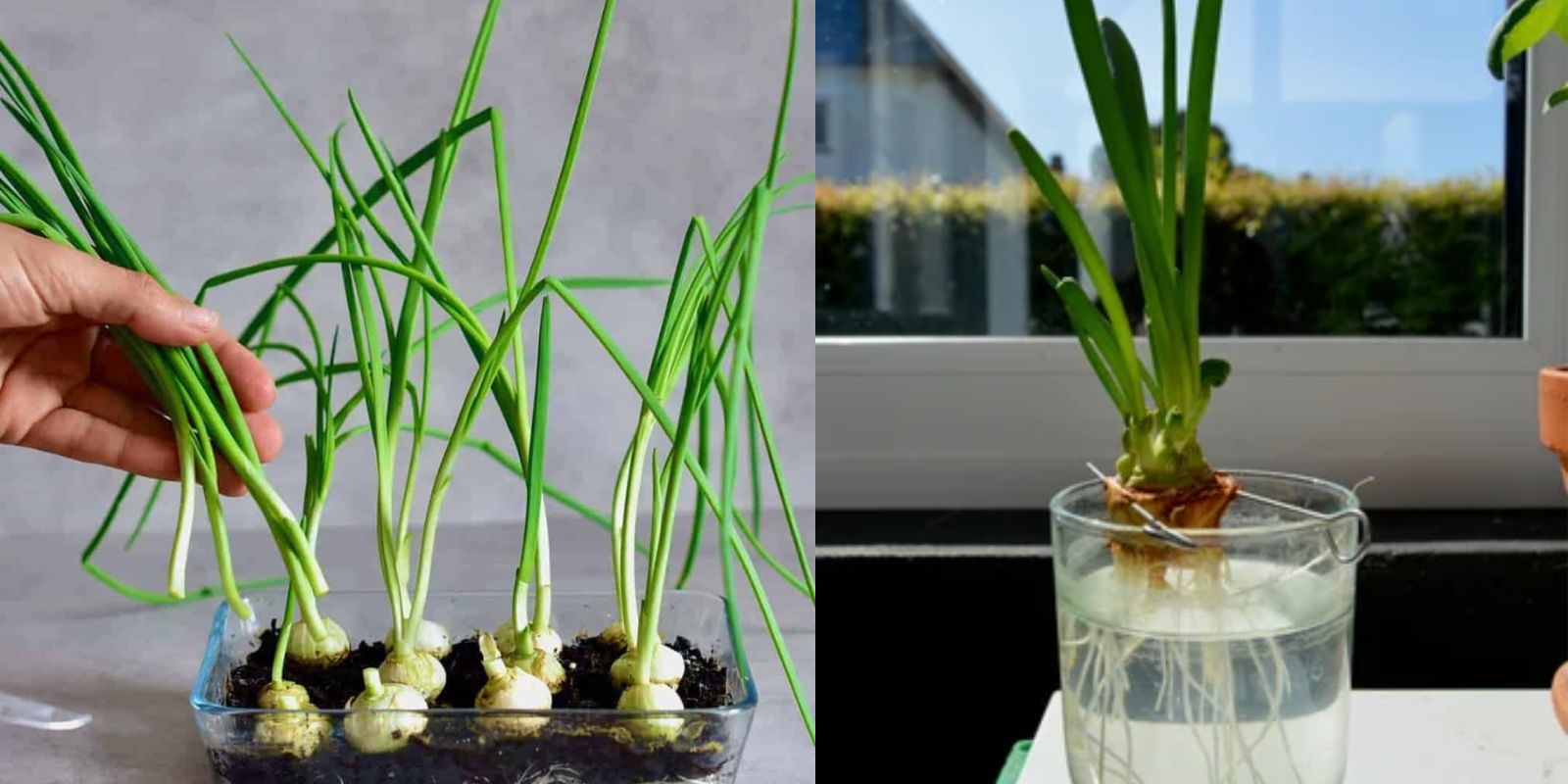Introduction
Onions are one of the most essential and versatile ingredients in kitchens worldwide. They’re simple to grow, have a long storage life, and with a few easy steps, anyone can cultivate a successful onion harvest. Whether you’re looking to grow onions in your backyard, in containers, or on a small plot, this comprehensive guide will take you through every step of the process to ensure your onion crop is bountiful and healthy.
1. Choosing the Right Onion Variety
One of the first things to know about growing onions is that not all onions grow well in every climate. There are three primary types of onions based on day length, which dictates when the onion will form bulbs:
- Short-Day Onions: Require around 10-12 hours of daylight and are ideal for warmer, southern climates. These onions, like ‘Yellow Granex’ or ‘Texas Super Sweet,’ form bulbs in the shorter daylight of spring and are often sweeter.
- Long-Day Onions: Require around 14-16 hours of daylight and are better suited for northern climates. Varieties like ‘Walla Walla’ and ‘Yellow Sweet Spanish’ are good choices.
- Day-Neutral Onions: These varieties are adaptable and grow well in various climates, as they don’t rely as heavily on daylight hours to form bulbs. Options include ‘Candy’ and ‘Superstar.’
Choosing the right variety for your region ensures that your onions will have the optimal conditions to thrive.
2. Selecting Planting Material: Seeds, Sets, or Transplants?
There are three main ways to start onions:
- Seeds: Growing from seed allows you the most variety in terms of onion types. Start seeds indoors about 8-10 weeks before your last expected frost date. Transplant seedlings outside once the soil can be worked in spring.
- Sets: Sets are small onion bulbs harvested prematurely in the previous season. They’re easy to plant directly in the soil and are a fast and reliable option, but they may offer fewer variety options.
- Transplants: These are seedlings that have already been grown to a few inches tall and can be directly planted into the garden. They’re a good middle ground, with reliable growth and more variety options than sets.
3. Preparing the Soil
Onions need nutrient-rich, loose soil that drains well. Here’s how to prepare your garden bed or container for onion planting:
- pH Level: Onions prefer soil with a pH of 6.0-7.0. A slightly acidic to neutral pH is best.
- Add Organic Matter: Work in 2-3 inches of compost or well-aged manure to enrich the soil with organic material.
- Ensure Good Drainage: Onions are prone to rot if they sit in waterlogged soil. Add sand or perlite if your soil is heavy clay to improve drainage.
4. Planting Onions
Timing: Plant onions as soon as the soil is workable in spring. In warmer climates, you can plant onions in late fall for a spring harvest.
Spacing: Onions need room to grow; plant them about 4 inches apart in rows spaced 12 inches apart. Plant sets 1 inch deep, while seeds should be planted shallowly.
5. Watering Needs
Onions need a steady supply of moisture to develop plump, healthy bulbs. Here’s how to water them effectively:
- Early Growth: Keep the soil evenly moist. Onions don’t like to dry out but avoid oversaturation, which can lead to root rot.
- Bulb Formation: When you notice the base starting to swell, it’s crucial to ensure they’re getting adequate water. Around an inch of water per week should suffice, but increase if you’re experiencing dry weather.
6. Fertilizing Onions
To support growth, onions need a balanced supply of nutrients, particularly nitrogen, for strong green foliage. However, avoid excessive nitrogen during bulb formation to prevent lush tops and small bulbs.
- Early Growth: Use a balanced, slow-release fertilizer when planting.
- Mid-Season Boost: Apply a nitrogen-rich fertilizer like fish emulsion every 3-4 weeks until the bulbs start to form.
7. Mulching and Weed Control
Weeds compete for nutrients, so it’s essential to keep them in check. Mulching is a simple and effective way to control weeds, conserve moisture, and regulate soil temperature.
- Organic Mulch: Apply a 1-2 inch layer of organic mulch like straw, hay, or grass clippings. This prevents weeds from taking root and makes maintenance easier.
8. Pests and Disease Management
Common pests that affect onions include onion maggots, thrips, and nematodes. Disease issues may include downy mildew and fusarium rot.
- Natural Pesticides: Use neem oil spray to deter pests and keep plants healthy.
- Proper Spacing and Rotation: Maintain proper spacing and rotate onion crops to reduce the risk of disease.
9. When and How to Harvest
Onions are typically ready for harvest when the tops turn yellow and fall over. Here’s a quick guide on timing and technique:
- Stop Watering: A week before harvesting, stop watering to encourage the onions to dry out.
- Loosen the Soil: Use a garden fork to gently lift onions from the soil to avoid damaging bulbs.
- Cure Before Storage: Allow onions to dry in a warm, well-ventilated area for a couple of weeks. Once the outer skins are dry, trim the roots and tops for long-term storage.
10. Storing Your Onions
Curing properly ensures that your onions stay fresh for months. Here’s how to store your harvest:
- Cool, Dry Place: Store onions in a cool, dry location with good air circulation. Ideal storage areas are basements or pantries.
- Separate Varieties: Sweet onions have a shorter shelf life than storage onions, so use them first.
Conclusion
Growing onions is an enjoyable and rewarding gardening project that yields delicious results. With these comprehensive steps, you’ll be well on your way to a healthy and bountiful onion crop. From planting to storage, this guide provides all the knowledge you need to grow onions successfully and keep them fresh for the kitchen.
#GrowOnions #GardenTips #HomeGrown #OnionHarvest #VegetableGardening #GreenThumb

